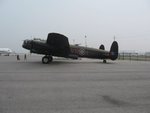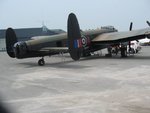rogthedodge
Airman 1st Class
- 155
- May 9, 2007
I'll admit I'm absolutely no expert but I'm interested in your views / any links to the evidence.
As I understand it the RCAF flew a version that featured a ball turret covering the vulnerable underside but the RAF didn't.
Was this an option for the RAF but not taken up or a Canadian variant they produced themselves?
Obviously the extra turret = more crew / weight and less bombs/range - was this a case of RAF 'backs to the wall' expediency or the RCAF taking a sensible course and accepting the slight lessening of performance?
Did this difference make a difference in the loss rates (pro-rata?)
Was there any political disagreement over adopting / not adopting this option?
It's always intruigued me that the Lanc had a glaring disadvantage - one allied air force recognised this and provided a solution, the other just ignored it and accepted the losses (?).
Any help much appreciated
As I understand it the RCAF flew a version that featured a ball turret covering the vulnerable underside but the RAF didn't.
Was this an option for the RAF but not taken up or a Canadian variant they produced themselves?
Obviously the extra turret = more crew / weight and less bombs/range - was this a case of RAF 'backs to the wall' expediency or the RCAF taking a sensible course and accepting the slight lessening of performance?
Did this difference make a difference in the loss rates (pro-rata?)
Was there any political disagreement over adopting / not adopting this option?
It's always intruigued me that the Lanc had a glaring disadvantage - one allied air force recognised this and provided a solution, the other just ignored it and accepted the losses (?).
Any help much appreciated


